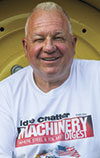Situation No. 1
Your brother lends you his 1-year-old ¾-ton diesel pickup truck to use for a few weeks while he’s on vacation. You are considering buying one, so you welcome the opportunity for the extended “test drive.”
He uses the truck for his dairy consulting business and drives about 35,000 miles a year. When you have his truck, you use it to check cattle and go the 10 miles from your ranch to town a few times a week.
A day or so before he comes home, when you start the engine the display on the dashboard says that an active regeneration is required and to drive the truck at highway speeds for one hour. Startled by this, you park it and wait for your brother to return.
He tells you he’s never seen this prompt before in 35,000 miles but not to worry; it is still under warranty. The next day, your brother drives to a client’s farm 100 miles away, and on the trip, the truck uses more fuel than usual, but then everything is fine, and the prompt goes away.
You both think the truck must have some gremlins in it. You mention it to some friends after church, and this is what they say:
A. Farmer A says due to how you used the truck, the diesel particulate filter became soot loaded, and that prompted the need for an active regeneration.
B. Farmer B is adamant about all new trucks being junk, so he still drives his 1992 F-150.
C. Farmer C claims the system has a problem, and it will come back again – maybe a loose wire.
D. Farmer D believes the truck has defective or contaminated diesel exhaust fluid in the tank.
Situation No. 2
Your summer vacation is over, and you are taking the time to get your combine ready for harvest. You look everything over and fit both the corn and bean headers to make sure all is well.
When you first start the engine, you notice a fair amount of blue/white smoke from the exhaust. Thinking nothing of it, you go about your business. On the engine’s subsequent restarting, smoke is still present and dissipates in about 20 seconds, then the exhaust is clean.
You had just changed the engine oil and filter, and nothing stood out as being wrong. Where do you think the smoke is coming from?
A. Farmer A thinks the seal in the turbocharger is going bad and is leaking.
B. Farmer B believes the piston rings are shot, and you better hope for an excellent yield to pay for the repair.
C. Farmer C tells you not to worry; most likely the smoke is from worn valve stem seals.
D. Farmer D laughs and says that is why he always buys a different “color” combine!
Situation No. 3
You are reading an article about subharmonic stress relief of metals. You learn of the acronym HAZ, but you do not remember what it stands for. At coffee the next day, you ask your farmer friends, and they claim the following:
A. Farmer A says it is the heat-affected zone when working with metal.
B. Farmer B says it identifies a hazardous gas from the steel if you weld on it.
C. Farmer C thinks it is a type of metal.
D. Farmer D says it is something that The Hot Rod Farmer just made up!
Answers
Situation No. 1: Farmer A is correct. You exposed your brother’s diesel pickup to numerous starts and short driving cycles, which caused the diesel particulate filter to become loaded with soot and not burn off with a passive regeneration cycle. Reference the Tier IV article in the Farm Machinery Digest learning series for a complete understanding of this system.
Situation No. 2: Farmer C is correct. In almost every instance with a gas or diesel engine with blue smoke on engine start, it is valve stem seals or guides. The seals are the more likely cause.
When the engine is shut down, hot oil leaks past the seal and sits on the piston’s top and is burned off when combustion occurs. The smoke lasts for a short while, since only a small amount of oil is on the piston crown.
Situation No. 3: Farmer A knows the answer. HAZ refers to the heat-affected zone. This is the area that becomes elevated in temperature when metal is welded on, cut or machined. The uncontrolled cool-down rate in the HAZ induces thermal stress that either weakens the part or causes distortion.




